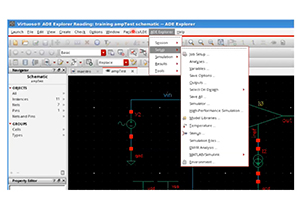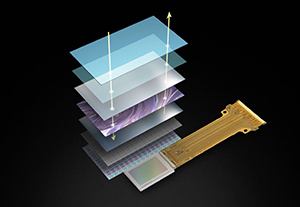What is Circuit Simulation?
Circuit simulation is a process that uses mathematical models to determine how a circuit will function when it is physically manufactured. In modern integrated design, advanced tools are used to create IC designs with billions of transistors. However, as manufacturing a circuit is complex and expensive, it is necessary to ensure that the designed circuit works as intended before it is manufactured. This is where circuit simulation comes into play.
There are different types of circuit simulators that cater to various needs across the accuracy-performance/capacity spectrum. At one end of the spectrum are analog simulators that offer high accuracy and solve accurate representations of electronic circuits. They are commonly used for simulating small circuits. At the other end of the spectrum are digital simulators that use functional representations of electronic circuits. These circuits are typically described using hardware description languages (HDL).
Why is Circuit Simulation Important?
Circuit simulation is an invaluable tool in the development and testing of electronic circuits, offering a window into their behavior without the high costs and time demands of physical manufacturing. This is particularly crucial for integrated circuits (ICs), where simulation allows for the verification of circuit behavior and performance before the expensive manufacturing process begins.
Validation through circuit simulation covers several critical areas. Memory performance is analyzed by simulating the read and write access times and latency of memory devices, focusing on the analog circuits within the bit cells and read/write paths. The accuracy of overall digital simulation also relies heavily on analog circuit simulation, which determines the time required for a circuit to transition between voltage levels, thus ensuring the precision of digital simulators.
Additionally, circuit simulation plays a key role in the modeling of noise and crosstalk, as it facilitates the creation of higher-level models based on detailed circuit-level analysis of these parasitic effects. This is particularly vital for the optimization of circuits that operate at high frequencies or power levels, where continuous time analysis provided by analog simulation is essential for assessing their behavior and performance criteria.
Furthermore, the performance and behavior of complex digital circuits, such as core processors and AI accelerators, are verified through digital circuit simulation. This underscores the importance of both analog and digital simulation methods in ensuring the reliability and efficiency of modern electronic components.
Circuit Simulation with Cadence
Cadence custom circuit simulation solutions provide all the necessary tools for designing and verifying your analog/mixed-signal blocks. Cadence’s chip-level circuit simulation software is designed to handle large capacity and high performance to ensure that a full chip works as intended, regardless of how the blocks perform in aggregate. Furthermore, Cadence’s mixed-signal simulation solutions blend output results from industry-leading block-level and full-chip analog simulators with advanced digital analysis technologies. This superior approach to analysis also includes an extensive multi-language capability that supports design abstraction and the ability to add RF information.
Block- and Subsystem-Level Simulation
Cadence offers diverse solutions to help achieve the design goals for analog/mixed-signal blocks. The Spectre platform provides steady-state analysis capabilities that enable the evaluation of noise and transfer functions of blocks, including dynamic comparators, time-to-digital converters, and more. The Spectre X Simulator handles the electrical verification of large-scale analog-centric System-on-Chip (SoC) designs, such as high-speed SerDes, 5G RFIC designs, and advanced-node Intellectual Property (IP) blocks. This simulator takes advantage of cloud infrastructure and performs massively distributed simulations that are necessary to verify complex full-chip designs in a timely manner.
Chip-Level and Memory Simulation
Cadence provides chip-level simulation solutions that offer high capacity and performance, ensuring that the full chip design works as intended. The Spectre FX FastSPICE Simulator delivers the accuracy and speed required for precise chip-level simulations of large systems on chip (SoCs) and memories. Spectre FX Simulator is a transistor-level FastSPICE circuit simulator that verifies pre- and post-layout designs of large-scale DRAM, flash, SRAM, and transistor-level SoCs. Additionally, it offers extensive scalability of up to 32 cores to leverage modern compute farm resources.
Mixed-Signal Simulation
Cadence’s mixed-signal, mixed-language, and transistor-level simulator is a powerful tool that combines the Xcelium and Spectre digital and analog circuit simulators. It is designed to provide designers and verification engineers with superior performance and access to advanced verification methodologies to improve their verification coverage.
The Spectre AMS Designer and Spectre AMS Connector are mixed-signal simulation and verification solutions that enable the design and verification of analog, RF, memory, and mixed-signal SoCs. The Spectre AMS Designer contains basic digital features and is a superset of the Spectre AMS Connector.
The Spectre Circuit Simulator, Spectre Accelerated Parallel Simulator (APS), and Spectre Extensive Partitioning Simulator (XPS) are integrated with Cadence’s Virtuoso, Allegro, and Innovus solutions to deliver comprehensive design and verification. Cadence's Virtuoso ADE Suite provides design analysis and verification tools for running 10 to 10,000 simulations.
RF Simulation
The Cadence RF simulation solution is a versatile tool that allows for a wide range of analyses. It provides valuable design insights and enables the verification of various RFIC types, including mixers, transceivers, power amplifiers, dividers, switched capacitors, filters and phase-locked loops (PLLs). It also supports extensive noise and distortion analysis technologies and application-centric analysis, such as wireless analysis for system-level performance evaluation using standard-compliant signal sources. The Cadence Virtuoso ADE Product Suite allows you to easily set up multiple tests for multiple conditions to achieve exhaustive simulation results.
Related Videos & Articles


